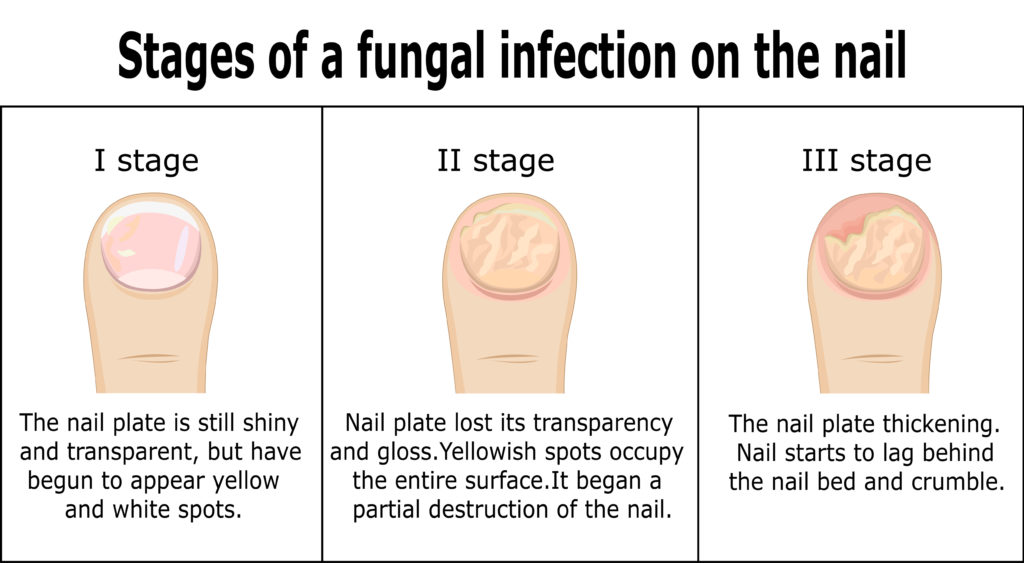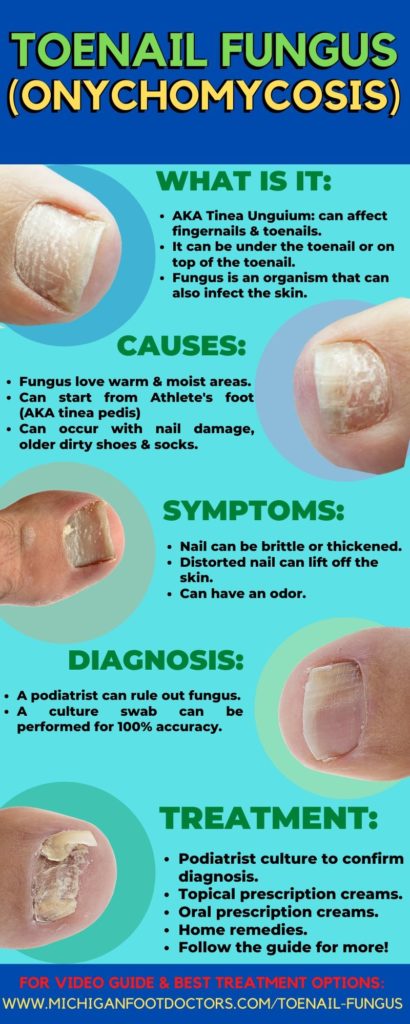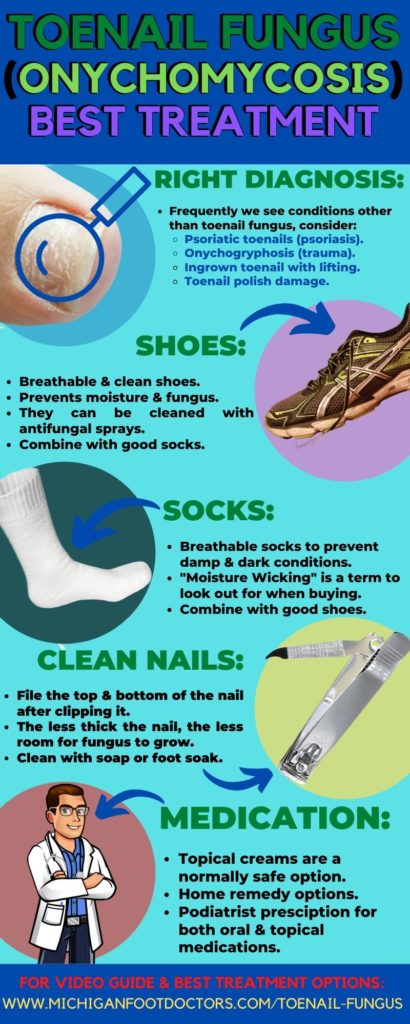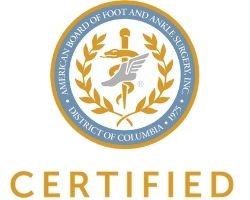What a Podiatrist Can Do For YOU!
Medical Pedicure Near Me [Toenail Fungus & Ingrown Toenail Podiatrist]
Do you need a podiatrist pedicure or a medical pedicure? We have the BEST toenail fungus podiatrists & ingrown toenail podiatrists!


Table of Contents
Medical pedicure near me:
Prime foot and ankle specialists, we have podiatrists that perform medical pedicures. Let us be your choice for a podiatrist pedicure.
There are many reasons to pick a podiatrist medical pedicure versus a cosmetic pedicure, and the most common reason is that podiatrists can accept insurance for coverage. And research and studies recommend that people with health conditions such as diabetes, smoking, osteoarthritis, or other health issues that would prevent them from taking care of themselves visit a podiatrist.
This would allow your podiatrist to treat your toenails, your corns, or calluses and to diagnose any medical problems, and take care of your feet.
Where can I get a medical pedicure near me or a medical grade pedicure near me?
What is a medical pedicure?
Most people know what pedicure is. The pedicure is a wonderful treat for yourself when you need a little self-care for your toenail pain and callus pain. For healthy people, without any problems, a standard cosmetic pedicure from a spot or a nail salon is a great way to pamper yourself into relieving your foot pain.
On the other hand, there are things called podiatrist pedicures or medical pedicures. There is something called a podiatrist or medical pedicure for people with health problems such as blood flow problems, diabetes, osteoarthritis, vision problems, nerve problems, vision problems, or old age that prevents them from taking care of themselves.
Especially since the start of Covid, people have been unable to leave their homes and unable to take care of themselves. With health problems, it can be risky to get your toenails taken care of by a nonmedical specialist.
Does insurance cover a medical pedicure?
Insurance such as Medicare, Blue Cross, and other insurance allows for the coverage of foot care, Corning care, and callus care by a podiatrist if you are a high-risk patient.
We see hospitals filled almost every day with patients with ingrown toenails, toenail fungus infections, infected ingrown toenail infections, infected corns and calluses that can lead to diabetic wounds, diabetic ulcers, and foot infections.
It is a great idea to see her podiatrist make sure that you have any foot problems such as a bunion, hammertoe, ball of the foot pain, heel pain, plantar fasciitis, or worse.
We have podiatrists available inside the clinic to work on your ingrown toenails, your toenail fungus, your hammertoes, and bunion pain to make sure you feel a lot better quickly.
What happens during a medical pedicure?
At first, your podiatrist will examine your feet and your toes. Our podiatrists are board-certified and well-trained to take care of all medical problems related to the feet.
Our podiatrists will look at the early stage of toe fungus, foot fungus, warts, plantar warts, calluses, and corns.
Your podiatrist will use alcohol to cleanse your foot, establish good healthy skin, and ensure we are not missing anything.
Your podiatrist will use a smoothing tool to smooth and thin the toenails to make sure there is no phone nail fungus, no ingrown toenails no infections.
If there is an infection or healthcare-related problem, your podiatrist will treat it and potentially start you on medications.
If you have diabetes or other health issues, your podiatrist will refer you to a specialist to ensure no problems otherwise.
Your podiatrist will then file and thin your nails and use advanced toenail clippers to ensure no significant problems or issues.
If you have corns or calluses, your podiatrist can perform corner removal or callus removal for your toenails and feet.
How does a podiatrist do medical pedicures?
The final step is that your podiatrist moisturizes and offloads your left and right foot and feels better.
We can also perform a biomechanical exam to ensure no deformity such as bunions hammertoes ball of the foot pain heel pain plantar fascial pain osteoarthritis.
We can perform a walking analysis to ensure you are not tight in one leg compared to the other. We have prevented knee pain, hip pain, or surgeries for joint replacement of these problems in many cases.
We can further evaluate for any skin problems such as skin tags discolorations or any other health issues.
The health benefits of a podiatrist pedicure or medical pedicure?
How do podiatrists give medical pedicures?
These are some of the benefits of a medical pedicure & how a medical pedicure is performed:
A medical pedicure can prevent ingrown toenails. By preventing ingrown toenails, we can prevent infections or hospitalizations for people with numerous health crowns.
A podiatrist pedicure can involve smoothing the toenail and prevent cracked or thick toenails.
A podiatrist pedicure can prevent foot odor and can prevent toenail fungus.
Finally, a podiatrist pedicure can stop any wounds, cracks, or problems from developing.
A podiatrist pedicure can involve a biomechanical exam to make sure that there are no biomechanical conditions such as bunions or hammertoes happening.
A podiatrist can notice any cuts or lacerations that can prove there are not any foot infections.
A podiatrist pedicure is can also prevent corns and calluses from occurring and happening to her feet.
Research has shown that podiatrist pedicure is are very effective in reducing the overall health care burden. As a result, podiatrist pedicure is generally covered by insurance, such as Medicare, Blue Cross Blue Shield, Etna, United healthcare, health alliance plan or Happ, Oscar health, health share plans, Cigna health, and more.
Spa pedicure vs. podiatrist medical pedicure?
A pedicure is a great option for young, healthy people for cosmetic reasons. A podiatrist pedicure is a great option for people with any health issues.
Our podiatrists are board-certified and accept health insurance to evaluate foot pain and foot types such as ingrown toenails, toenail fungus, and calluses.
If you have toenail fungus or thickened toenails that are discolored, this infection is a medical problem requiring medical treatment. We have a board-certified podiatrist and the best ratings to help you with your foot pain. So if you need a podiatrist or pedicure, ask yourself how serious her problem is.
Frequently asked questions about medical foot pedicures:
Is it possible to get a medical pedicure for nail fungus near me?
Yes, at Prime foot and ankle specialists, we offer medical pedicures for nail fungus. We frequently hear the question, who is the best medical pedicure for nail fungus near me? We want a prime foot and ankle specialist to be the answer to this question.
Please consider seeing us for a no-obligation consultation to treat your toenail fungus.
We offer medical pedicures, laser therapy, medication therapy, and more to get rid of your toenail fungus.
Where to get a medical pedicure near me?
And another question we hear is, “where to get a medical pedicure near me?” We admit we are biased but see us apprised foot and ankle specialist in Berkley, Michigan. We offer office and home visit appointments for those who cannot make it in due to health conditions.
How much is a medical pedicure?
A common question is how much is a medical pedicure? The answer is, in most cases, a medical pedicure is covered by insurance. We accept Medicare, Blue Cross Blue Shield, Blue care network, Etna, United healthcare, health alliance plan or hat, health share plans, and we offer cash payment options. There is no excuse not to see a podiatrist or foot doctor for a medical pedicure, especially if you have diabetes, blood flow problems, health problems such as osteoarthritis, an inability to take care of yourself, poor vision, or the fact that you have pain and cannot take care of her toenails. It is not normal to have an ingrown toenail. It is not normal to have toenail fungus, is not normal to have discolored toenails. So if you have any of these problems, the studies show that it is a good idea to see a podiatrist prevent your problem from worsening.
Medical pedicure for people with diabetes?
Studies and research have shown that it is beneficial for diabetic patients to receive a medical pedicure for people with diabetes. This can be considered a safe option that can prevent hospitalization, prevent future infections, or future foot and ankle problems.
Medical pedicure tools:
A podiatrist utilizes only the most advanced medical pedicure tools.
We use high-quality steel tools that are autoclaved and sterilized between appointments and visits.
We used Advanced Technology such as medications to clear up toenail fungus or laser therapy if necessary.
We used smoothing devices to smooth down the thick unpleasant toenail if this is necessary.
Our podiatrists are also trained in the latest ingrown toenail techniques such as permanent ingrown toenail removal surgery, callus removal surgery, corn removal surgery which can be performed on the first visit if necessary.
A podiatrist can also apply local anesthesia similar to having a dentist be used for a tooth problem. This could anesthetize the tooth and become numb for the remaining portion of the day while your foot problem recovers.
Toenail Fungus Picture Gallery:
This gallery shows different types of toenail fungus.
Look:
- The most common type is called subungual onychomycosis. This is when the toenail fungus gets underneath the toenail and lifts the nail.
- This can cause damage to the toenail bed, preventing future attachment of the toenail.
- It is also possible to get superficial white onychomycosis. This is the buildup of white superficial fungus on top of the toenail.
- If you just removed your toenail polish, this may not be fungus. It may be something called keratin granulations.
- This may not be fungus if you have white horizontal lines or white horizontal ridges on your toenails.
- It is also possible to get it throughout the entire nail, or the nail is destroyed and is dead.
- The good news is these are all very treatable!
So click on the photos for gallery mode & description!
Click on pictures for full size & descriptions:
Toenail Fungus (Onychomycosis) Treatment & Cure Options:

Frequently Asked Podiatrist Questions?
Q: What is a podiatrist?
A: Podiatrists are Doctors of Podiatric Medicine, DPM. Podiatrists are podiatric physicians, foot doctors, or podiatric surgeons. Podiatrists often diagnose and treat the foot, ankle, and other related structures of the leg.
Podiatrists receive similar training that other doctors complete. They complete four years of training in a podiatric medical school and three years of hospital residency training.
The podiatrists at Prime Foot & Ankle Specialists have received extra training, such as fellowships beyond residency and board certifications by the board of foot and ankle surgery and the board of podiatric medicine.
Q: Do podiatrists accept insurance?
Yes, podiatrists do, except for insurance. We set most major insurance plans as podiatrists and foot doctors. This includes Medicare, Medicare plus blue, Blue Cross Blue Shield, United Health, and Aetna health. Humana, Blue Care Network, Oscar Health, Molina, Meridian, Health Alliance Plan of Michigan (HAP), Health Share Plans, Christian Health Share Plans, Worker’s Compensation Plans, and Cigna Healthcare.
Q: Is podiatrist toenail trimming covered by insurance?
Yes, this service may be covered for people with help issues that cannot help themselves. If your foot is in pain or has a health issue, a podiatrist is recommended to evaluate you, and this is a covered option.
If you have foot pain, please call our office and schedule a no-obligation consultation with our podiatrists to assess your eligibility for foot care.
Q: Does insurance cover podiatrist ingrown toenail removals?
Yes, ingrown toenails are covered by insurance. Let us help! Don’t wait to come in if you have a toe or foot infection.
Q: What parts of the body do podiatrists treat?
A: Podiatrists in Michigan are licensed to treat the foot, ankle, and lower leg below the knee.
At Prime Foot & Ankle Specialists, we specialize in toenail problems, toe problems, foot problems, heel problems, ankle problems, minimally invasive surgery, advanced diagnostic techniques, and advanced treatment options. We pride ourselves on being your choice for all foot and ankle problems!
Q: When should I call a podiatrist for an appointment?
A: Pain is never normal, especially if it lasts longer than a week. This means that most insurance plans will cover a visit if you feel you have a problem developing with your feet.
The longer you wait, the more serious the pain may become, leading to hospitalization or further foot problems.
It would help to have it evaluated and treated to avoid long-term problems.
Q: Can podiatrists perform corn removal and callus removal?
A: Corns and calluses are thick, hardened layers of skin. Development of corn and callouses occur when your skin tries to protect itself against friction and pressure.
If corns and calluses are causing you discomfort, you should seek treatment. The most common areas of development are on your feet and toes. We provide treatment for these somewhat unsightly painful conditions. Don’t hesitate to contact us today.
Q: Does insurance cover the podiatrist treatment of corns and calluses:
If you feel you have a foot problem that you cannot care about on your own, evaluation and diagnosis are covered. We provide a no-obligation consultation to inform you if this is the case. In general, foot pain and a painful lesion on the foot covered the visit.
Q: What is a hammertoe?
A: A Hammertoe is a contracture (bending) of one or both joints of the second, third, fourth, or fifth toes.
We provide advanced imaging such as ultrasound and digital X-rays to diagnose immediately in the office.
This abnormal bending can pressure the toe when wearing shoes, causing painful problems.
Conservative and surgical treatment options are available for the treatment of Hammertoes.
Q: What causes heel pain?
A: Typically, heel pain is not caused by one single incident or injury, and the most common cause is plantar fasciitis, which can lead to long-term pain that may one day require surgical treatment if not corrected.
Repetitive stress/pounding of the heel can cause heel pain.
Other common causes can include inflammation of the plantar fascia, inflammation of the back of the heel, inflammation of the heel pad, progressive degeneration of the Achilles tendon, or a stress fracture caused by repetitive stress to the heel.
Q: What are orthotics or insoles?
A: Orthotics or insoles are custom foot supports that replace the over-the-counter supports that come in shoes you buy off the shelf at the store. These are designed to hug your foot more efficiently than over-the-counter products to significantly aid in balancing the biomechanical inadequacies of your feet and legs.
Q: How can you tell if you have an infected ingrown toenail?
A: You may have an infected ingrown toenail if there are any signs of redness, swelling, pain, and drainage, such as puss coming from the area.
- If you notice any of these symptoms, contact your podiatric Physician immediately.
- If you have toenail pain, this may also be a sign. It is never normal to have toenail pain.
- If you have toenail redness or swelling, this is never normal.
Q: What is plantar fasciitis that causes heel pain?
A: The plantar fascia is the thick connective tissue on the bottom of the foot.
- This tissue connects the heel bone to the toes and is responsible for creating the arch in your foot.
- Plantar fasciitis is inflammation of the plantar fascia.
Q: Does Medicare pay for diabetic shoes and custom orthotics?
A: Medicare will cover diabetic shoes and inserts for some patients.
- Patients must meet and have specific qualifying conditions verified by the Physician managing their diabetes.
- If you have diabetes, you should have an annual foot evaluation performed by a foot doctor or podiatrist to determine your eligibility for this benefit through Medicare and other insurance carriers.
Balance Foot & Ankle, Howell, Michigan
Balance Foot & Ankle, Bloomfield Hills, Michigan
Balance Home Care & Wound Care
11 Reasons To Choose US!
- 🥇 We work hard for YOUR Satisfaction. (If you’re not 100% satisfied with your appointment, we WILL do everything we can to FIX IT for you.) Terms & Conditions.
- 🦶The BEST Podiatrists: Board Certified in Foot Surgery & Board Certified in Podiatric Medicine for all of your foot & ankle needs!
- 💻Telehealth appointment from the comfort of your own home!
- 🚗 You Can Park 100% for Free Right Outside The Door.
- 📲 You Can Book Online 24/7 Right From Your Phone.
- 🌙 You Can Get A Late Appointment Or Seen Outside of Regular Hours……No Need To Take Time Off Work.
- 🏠 If you cannot come to see us due to health issues or immobility… We can come to see YOU!
- 💉 The BEST Tools: In-office X-ray, In-office fluoroscopy, In-office ultrasound, injections, skin treatment, and in-office surgical suite. We are trained to use the NEWEST equipment.
- 📞 You Can Take Up Our Offer for a Phone or Telehealth Consult With Our Podiatry Team before you arrive if you are unsure if we can help you.
- 🏥 A professional cutting edge surgical suite staffed by residency trained Board Certified Foot & Ankle Surgeons: Minimally Invasive Surgery!
- 👣You Get Treated By Podiatrists Who Specialize In the Foot & Ankle, So They KNOW What’s Needed To Get You Back On Your Feet.
Google Rating
Prime Foot & Ankle Specialists - Podiatrists & Foot Doctors
4.9 341 reviews
-
Doug Gosa
★★★★★
4 months ago
Amazingly thorough! Astoundingly effective results! If you’re in their area - they need to be your people!!!
-
Joseph Russo
★★★★★
a year ago
I'm 54 years old, and I'm always enlighten by the info I get from this channel. We can never stop learning to better … More our health.
-
Alex Hyman
★★★★★
3 months ago
Just watched a youtube video on "Cuboid Syndrome Treatment" by Michigan Foot Doctors and I think the suggested … More treatment in the video has almost instantly healed my foot!
Free BOOK to solve foot pain:
STOP wasting TIME & MONEY on your foot & ankle pain!
“11 SIMPLE Ways to STOP Foot PAIN. “
Learn 11 simple step-by-step tips to get rid of foot & ankle pain… even if you’ve suffered for months or years and your doctor told you nothing could be done to help!

Frustrated With Your Foot Pain? Let Us Help!
Not sure what to do?
Not sure who to ask?
- If you live in Michigan, we can HELP!
Fill in the form, and one of our highly qualified team will be in touch to discuss your specific problem.
What a Podiatrist Can Do For YOU!
Other services our podiatrists perform:
- Toenail Fungus Treatment (Oral or Laser ).
- Toenail Trimming.
- Orthotics Fitting.
- Ingrown Toenails.
- Infected Ingrown Toenails.
- Podiatrist pedicure or medical pedicure.
- Trimming of Corns, Trimming of Calluses, and Treatment of Pressure Blisters.
- Diabetic Foot Care & Diabetic Foot Wounds.
- Athletes Foot, Dry Skin, Eczema.
- Foot & Ankle Ulcer Care.
- Infection and Abscess Care.
- Staph Infections in the Toe or Foot Treatment.
- Treatment of Plantar Warts for Your Toes and Feet.
- Foot & Ankle Injections (Steroid or Natural Solutions.)
- Management of Foot & Ankle Fractures (Walking Boots for broken toes or broken feet).
- Heel Pain (Heel Spur or Plantar Fasciitis).
- Custom Orthotics for children and adults (In the office).
- Over the Counter Orthotics for children and adults.
- Podiatrist medical pedicure.
- Extra-Depth Shoes for Patients with Diabetes.
- Diabetic Shoes.
- Gout Treatment.
- Prescription (Refills).
- Telehealth appointments.
- Shockwave therapy (AKA ESWT or EPAT therapy)
- Cold laser therapy (In the office).
- MLS laser therapy (Multi-Wave Locked System laser therapy).
- Laser for peripheral neuropathy (In-Office).
- Senior Toenail Cutting & Toenail Trimming Services.










